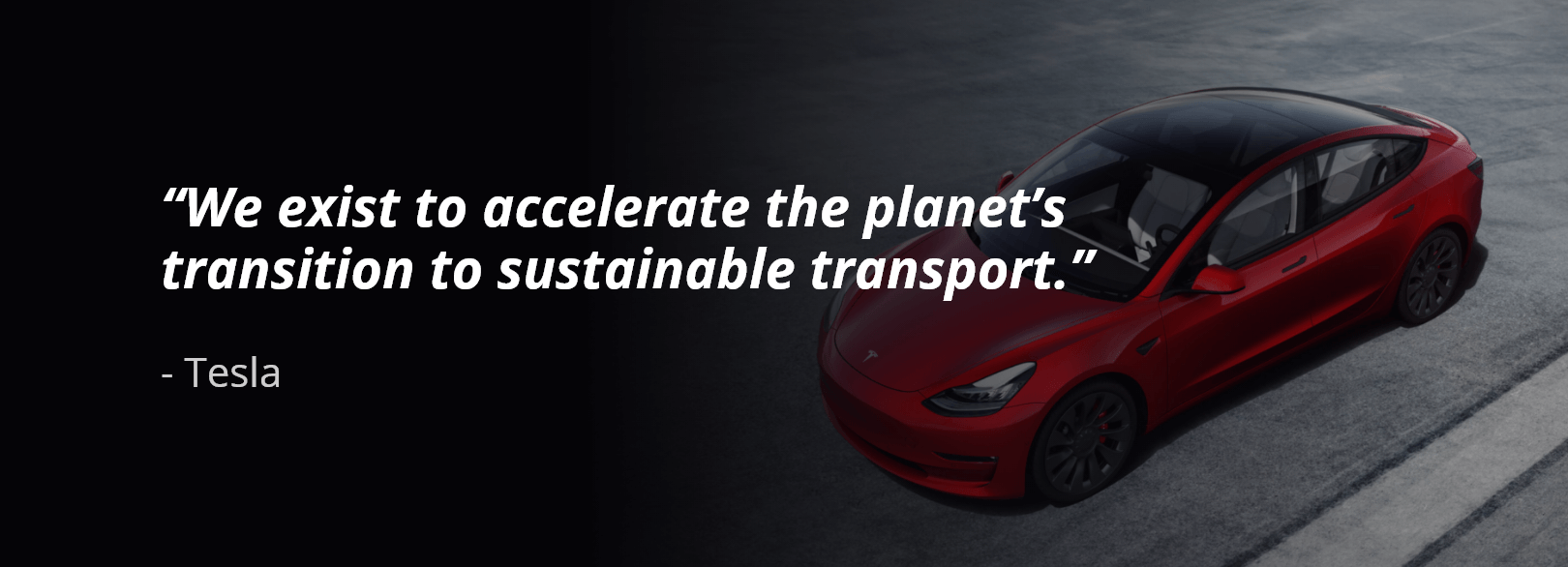Businesses today share fundamental corporate and social commitments. They seek to inspire the community, attract talent, and out-originate competition. And more and more of them have a purpose that goes beyond profit.
Crafting your Business Purpose Statement is a pivotal step in the early stages of identifying your enterprise’s core values and objectives. It’s the single line that encapsulates the very reason for your company’s existence, serving as a testament to your branding efforts.
A business’s purpose statement mirrors the connection between your core products and services and the positive impact they have on people’s lives. This statement acts as a compass for your company’s daily decisions, guiding your go-to-market strategies and initiatives.
In this article, we have prepared a few tips to help you write a powerful business purpose statement as well as practical guidelines on how to craft it well.
The Differences between Purpose, Mission, and Vision
Before we walk you through the specifics, we would like to make some important distinctions. Namely the differences between vision, mission, and purpose.
- A vision statement describes what your business is looking forward to and working towards. It’s the what of your organization.
- A mission statement outlines the process of turning your vision into a reality. It’s the how of your company.
- A purpose statement sets your reason for doing what you do. The why of your venture’s existence.
The three types of statements reflect different aspects of your organization’s operations and differ in the questions they answer. However, they are closely related plans of action that can help you deliver what your company is ultimately fighting for.
Without further ado, let’s get into the nitty-gritty of how to make your brand stand out with a strong and well-defined purpose statement.
1. It Should Inspire and Show Personality
Defining your purpose statement is a process. Adding the right words to correctly depict the reason for your company’s existence is a bit harder than you may imagine. The answer to your business’s “why” may seem obvious to you, but the key is to ground it in reality and communicate it to your audience successfully.
Start by reflecting on how your company came to be – the reason for creating it, the challenges you’ve overcome, the lessons you’ve learnt and the values you’ve adopted.

If you are an emerging entrepreneur with a completely new venture you can also apply this approach, but in a more personal context. Look back at the significant turning point that prompted you to become a business owner.
If you’re an established business with a long history of success, you can acknowledge the milestones of your firm’s growth. You can identify and define your business heritage and pin-point the specific characteristics of your brand that made it stand out all these years.

Make sure your purpose statement doesn’t include buzzwords or jargon. Use simple and clear language to directly communicate what your company’s here to accomplish.

2. It Should Play a Role with an Outcome
Since your purpose statement answers your company’s why it should set the outcome of what your business ultimately wishes to achieve and see out there.
Start your research by talking to your leadership. Ask them various questions and summarize the recurring themes.
Here are some examples:
- Why are you in this business?
- What do you like the most about working in the company?
- What image do you think the company conveys to the outside world?
- How do you feel about this image? What do you like and dislike about it?
- What specific challenges does the company solve?
- What do you think the purpose of the company is?
- What makes this business different from competitors’?
- Who are the target customers?
- What do you think they value most about this company?
- How do you think the company’s products and services reach their business goals? Do you think it’s effective? Would you say they reflect the business’s purpose?
- What are five words you would describe the company and its culture with?
- What underlying principles and philosophies shaped your responses to the previous questions?

Make sure you involve every leadership member. Think carefully about what you want to ask them. Form clear questions and take detailed notes.
Word your company’s purpose in a way that inspires room for thoughts while directly underlining your organization’s value proposition.

3. It Should Be Short, Yet Powerful
Your business purpose should be credible and easy to remember, especially by your employees. They are your most important resource and every one of them can influence how your organization is represented outside your office walls.
Your employees provide an essential link between you and your customers. Their energy can be a powerful asset to ensure that the entire organization leads with purpose. If they are happy, motivated and find a sense of fulfilment, they can be strong ambassadors of everything your brand stands for.
To find out how your employees feel about the purpose of your company you can ask them questions like:
- What inspired you to apply to this company?
- What do you like the most about working there? What makes you feel proud about it?
- How do you think the company’s products/services help customers?
- In what ways do you identify yourself with the company?
- What do you think is the company’s purpose? How would you put it in a few words?
- Do you think the purpose is reflected in the company culture?
Being in sync with your employees can help you make your business more agile and more responsive to challenges.
Always remember that your employees bring to light your purpose. The better it sticks in their minds the more natural it will be for them to communicate through their work.

4. It Should Create Space for Innovation and Growth
You’ve reflected back on how your organization has matured. You’ve sought and gained employee and leadership insights. Now, it’s important to identify the events and trends that can affect the social, political, economic and technological contexts that your brand operates in.
Maintaining a clear understanding of the present and the ability to anticipate and study future trends can set you apart. Align your Business Purpose Statement with real-world contexts to give it tangible meaning. This clarity allows you to understand opportunities more deeply, challenge the usual way of doing things, find the best solutions, and build on ideas. Hence, a compelling purpose statement may sometimes be wrestling with conflicting tensions all for the sake of fostering innovation and growth.
Purpose statements that fall into this category include:

With this statement, Workday showcases that there’s a possibility of instilling the human aspect into software and that it’s what they strive for.

With this statement, JetBlue deals with the tension that there are no boundaries to great customer experience.
5. It Should Be Aspirational and Precise
Your purpose statement should give a sort of tingle – a burst of inspiration and excitement. It should make your company want to strive to grow, to innovate, and to set an example. So, adding a pinch of emotion helps everyone involved to embrace it as their own.
The purpose of your business should reflect rational reasons for which it can supercharge your brand, culture, and business strategy as well as your organization’s ethics. Simply stating something, doesn’t make it come to life. Hence, a meaningful purpose statement should be able to influence a good purpose in practice. It should be aspirational and precise, expanding your organization’s opportunities for growth.
A vague example goes like this: “To make the world a better place”. A good example is more like this:

Additionally, your purpose statement can have a general or a social focus. Some companies have a more general statement, which doesn’t necessarily involve a social or environmental aspect.
An example of this is Airbnb’s statement:

It’s precise and showcases the company’s commitment to helping people travel like locals and experience a sense of community they wouldn’t be able to find in a hotel
This doesn’t mean that Airbnb doesn’t care about social or environmental issues. It simply means that it’s not at the very core of their existence.
To show you the difference, a business with a good social purpose is Patagonia:

6. It Should Evolve with Time
Purpose isn’t something that can be achieved once and for all. Companies grow, the business and social contexts change and your purpose statement should stretch along with these. It should always push your team further and it should set the stage for an inexhaustible series of new goals.
Let’s take Tesla as an example. Their original statement was:

But their current statement is:

The change from transportation to energy reflects also the shift in Tesla’s priority from an electric vehicle company to developing technology that makes sustainable energy more accessible.
Benefits of a Powerful Purpose Statement
Your company’s purpose statement establishes your business´s unique and inimitable attributes. It provides your brand with a competitive advantage and it acts as a guide for overcoming unprecedented challenges. It sets the tone that moves your organization forward, but it’s meaningless if not backed by solid and measurable commitments.
We hope our guide can help you create a defined and powerful business purpose statement for your organization. In fact, we would love to see what you’ve crafted, so don’t hesitate to share it with us in the comments below.
